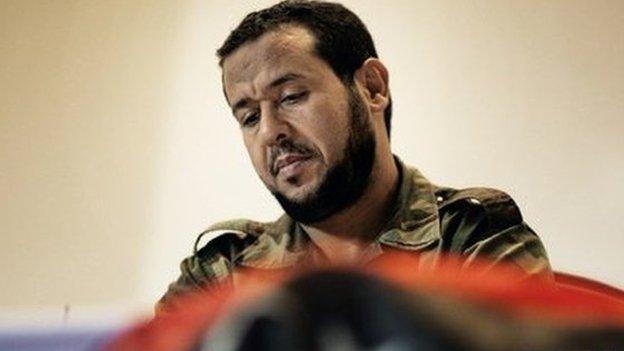CIA interrogation report: Just what did the UK know?
- Published
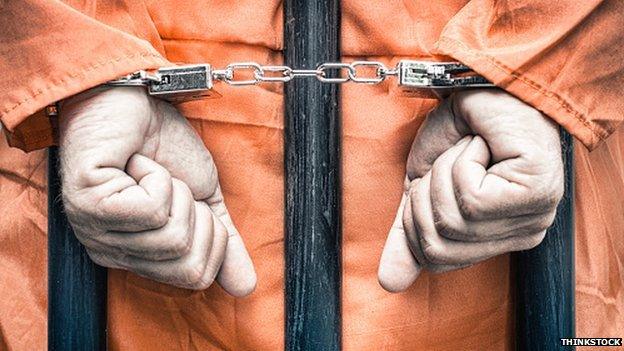
In March 2004, a Boeing 737, registration number N313P, lifted off from Baghdad International Airport with two prisoners on board - captured by the SAS after a shoot-out in the city.
They were on their way to Bagram prison, in Afghanistan.
The taking of the men - Yunus Rahmatullah and Amanatullah Ali - marked the culmination of a lengthy intelligence operation by MI6 and GCHQ.
They were tracking the flow of foreign fighters into Iraq, and, for a short time, all of those involved believed it was a triumph.
Those prisoners were to be held for more than a decade, much of it incommunicado.
Mr Rahmatullah, having been freed earlier this year, is now engaged in legal action against the British government.
Redaction speculation
By a strange coincidence, his case is likely to be heard jointly with that of Abdul Hakin Belhaj, when the government defends its position in the UK Supreme Court early in 2015.
He is a Libyan Islamist who was rendered from Thailand, with the assistance of MI6, in March 2004 - a few days before the two men captured in Baghdad - on that same CIA Boeing 737.
These cases, and particularly the Baghdad one, marked a high point for official UK co-operation with the US detention practices highlighted in last week's Senate Intelligence Committee report.
Yet these incidents, and a number of others subject to legal action or investigation in the UK, are not mentioned in the report.
This has caused many to speculate that they have been the subject of redactions at the request of the UK government.
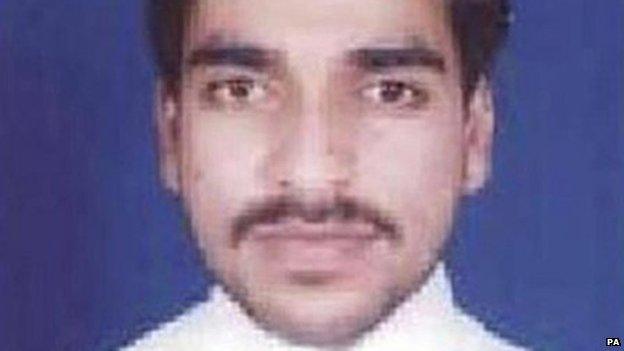
Yunus Rahmatullah was held as a prisoner for 10 years
But it is clear that the US lawmakers did not consider numerous cases of alleged mistreatment or torture involving those in the custody of the US military - as opposed to the CIA.
Cases such as those of the two men taken in Baghdad in February 2004 or of people rendered to their home countries - such as Libya - and mistreated there.
Evidently then, the senators may have only touched the surface of what was going on in looking at the CIA detention and interrogation programme.
It was meant to be focused on high-level detainees who might provide intelligence about the al-Qaeda leadership - although it also scooped up a great many other people, including around a quarter of the black site inmates who the CIA now judges to have been innocent.
'Suspect tortured'
If there is to be a new UK effort to get to the bottom of allegations of complicity, as Sir Malcolm Rifkind has suggested the Parliamentary Intelligence Committee, of which he is the chair, will do, then it will have to focus closely on the events of 2002 to 2004, and look at the military as well as the intelligence agencies.
Sean - not his real name - told me that in 2002 he had been in the same room with officers of the Secret Intelligence Service, MI6, American interrogators, and a suspect who was being tortured.
The incident Sean is talking about is alleged to have taken place in Afghanistan.
He told me about it because he says he is sick of the hypocrisy of those who try to exploit the intelligence gained by such methods without asking too many questions about how it has been acquired.
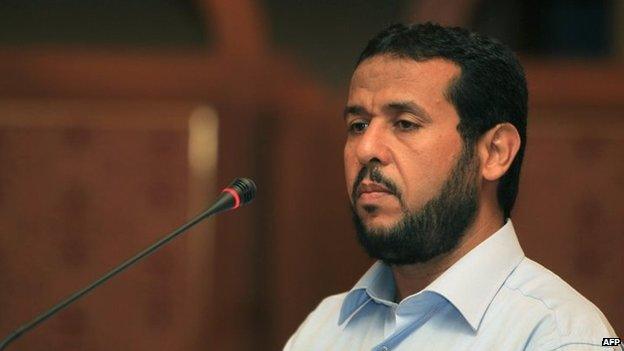
The UK government is contesting the claims of Abdul Hakin Belhaj
"The simple truth," Sean said, "is that torture works and that's why we used it."
His example: if somebody asleep in their home is woken, beaten by an intruder, and threatened with a knife, in most cases they will readily give up their bank cards and Pin code to their assailant.
How can Sean's statements - and his bona fides were known to me - be reconciled with statements such as those by John Sawers, chief of MI6 from 2009 to 2014?
In 2010 he described torture as "illegal and abhorrent", said his officers would have nothing to do with it, and even suggested that an act of terrorism might be allowed to go ahead if stopping it required the delivery of a suspect to people who would torture him.
Counter-terror coalface
Having spoken to many of those involved in intelligence and special operations during the period concerned, and followed the various British investigations into these practices, certain things are clear.
While early on senior British officials and ministers made clear their abhorrence for any involvement in torture, this message took a while to get through to those operating at the counter-terror coalface, many of whom felt building strong relationships with American colleagues required them to look the other way.
And while UK intelligence agencies strengthened their stance against such practices during 2004-2005, others such as special forces and military intelligence still felt there was sometimes a place for violent treatment of suspects they picked up in Iraq and Afghanistan.
A Senate report accuses the CIA of employing 'brutal' interrogation tactics in response to the 9/11 attacks. The BBC looks at the key numbers in the report.
Even today, many of the special forces and military intelligence people involved in Iraq and Afghan operations say they believe slapping, hitting, and even threatening with death those they had captured could, under certain circumstances, be justified.
The doctrine many of them believe in is that during the first minutes and hours after capture, people are so disorientated and frightened that their psychological defences are down.
This rapid interrogation, known as tactical questioning (or TQ - so named because it often took place where the suspect was captured) is aimed at getting some nugget of information that may be very short-lived in its usefulness.
It became more common as MI6 directives from 2004 onwards tightened up practices back in the larger bases or prisons.
Hostage rescued
When I was investigating Task Force Black, the British forces operation in Baghdad for a book of that name, I learned from multiple sources of the TQ conducted in one of the houses raided in March 2006.
Placing the Iraqi subject "under duress" revealed the whereabouts of British hostage Norman Kember, who was freed by the SAS shortly afterwards.
As we know from recent failed missions in Syria and Yemen, the hostage rescue can be the hardest of special operations, yet, in the Kember case, the result was likely obtained by using some of the tactics condemned by the Senate committee.
The tip used to find and free Mr Kember - and two other hostages - fits with "Sean's" analogy of the use of beating or fear to obtain a bank card Pin code.
It was high value intelligence that even an hour or two later might have been worthless.
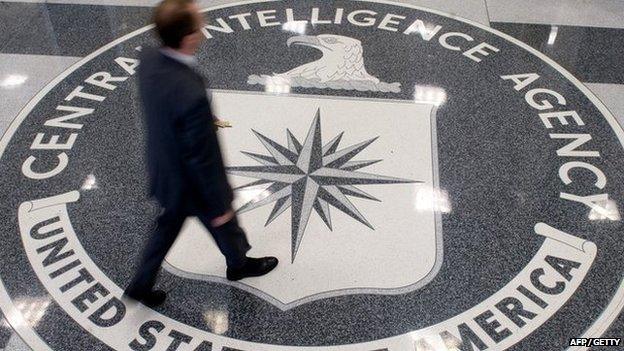
The CIA has been accused of carrying out "brutal interrogations"
In this sense, while the legal and moral stigmas involved in obtaining it were similar to those of the CIA programme, the Americans were actually trying, often unsuccessfully, to gain information from people weeks and months after capture.
Any timeliness it could have had was already lost, the victims were often ignorant of the answers being sought, and as many critics of torture have pointed out, might, after weeks of beatings or water boarding, have said anything they thought might make it stop.
By a further coincidence, the team that freed Norman Kember, from B Squadron of 22 SAS, contained many of the same people who had mounted a raid on a house in the al Saidiya neighbourhood of Baghdad during a tour two years before.
'Shot in face'
This mission, codenamed Operation Aston, was the one that resulted in the arrest of Yunus Rahmatullah and Amanatullah Ali prior to their transfer to Bagram.
Many of the people picked up in Pakistan or elsewhere, then rendered by the CIA, went quietly.
Operation Aston was very different.
The leading SAS operator who entered the building was shot in the face as he came through the door - the bullet miraculously lodging in his night-vision goggles.
Two men who were resisting were killed by the SAS and several more arrested, including the pair of Pakistani origin later rendered to Bagram.

"Tactical questioning" led to the release of Norman Kember
The men's allegations that they were beaten by the special operators in the moments after capture are still subject to legal argument.
For a fleeting moment, the special operators and intelligence people felt they had definitive proof of a link between a Kashmiri militant movement and the jihad in Iraq.
In time though many inconvenient facts were to emerge, not least that the men were Shia, so hardly likely to have been involved in a type of international movement of Sunni militant groups.
As for their presence in the building targeted in Operation Aston, where other men were clearly willing to fight and die, "they both maintain that they weren't there for terrorist purposes", says a source close to the men.
In the end Yunus Rahmatullah and Amanatullah Ali would endure years of mistreatment at the hands of the US military at Bagram, much of it as "ghost prisoners", unable to communicate with anyone outside.
Co-operation breakdown
They were freed only this year as America finally closed its Bagram facility.
Back in 2004, in the weeks after their rendition, which the Americans said was done because there was nobody with the right language skills in Iraq to interrogate Pakistanis, senior British officials reacted with shock.
They made it a formal condition of future operations that Task Force Black would not hand over any more suspects to the Americans if they were to be transported outside Iraq.
An even more serious breach in co-operation with the US occurred later in 2004 when an MI6 officer complained about detention conditions at a special operations black site prison at Balad air base, in Iraq.
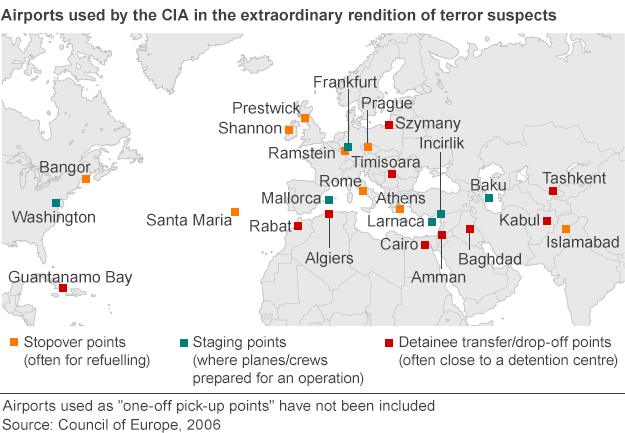
As a result UK and US special operations' co-operation against al-Qaeda targets broke down for nine months.
The seriousness of the opposition to torture by the leadership of the Secret Intelligence Service (MI6) can be shown by their response to three incidents in particular: a visit to Abu Ghraib early in 2004; the rendition of the Operation Aston detainees; and their Balad visit in the autumn of 2004.
As a result, stricter guidelines were put in place for MI6 officers, and many types of co-operation with the US - on rendition in particular - effectively broke down.
Yet there remains the legacy of sensitive cases relating to the period 2002 to 2005, but particularly during the first year of what the US styled as the global war on terror, that could still be damaging for the UK.
And if the investigations are pushed further into the areas of military intelligence and special operations, it will inevitably prompt a debate about whether doing this will damage the ability to respond to the challenges posed by Islamic State, at a time when the SAS is operating in Iraq again.
- Published17 December 2014
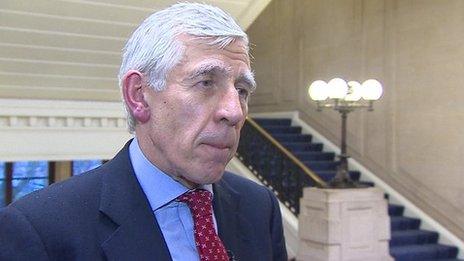
- Published15 December 2014
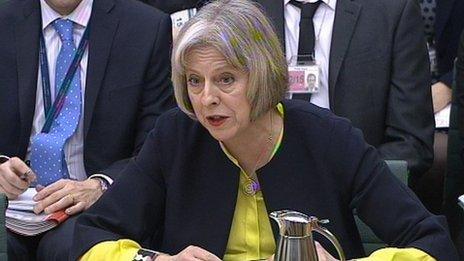
- Published10 December 2014
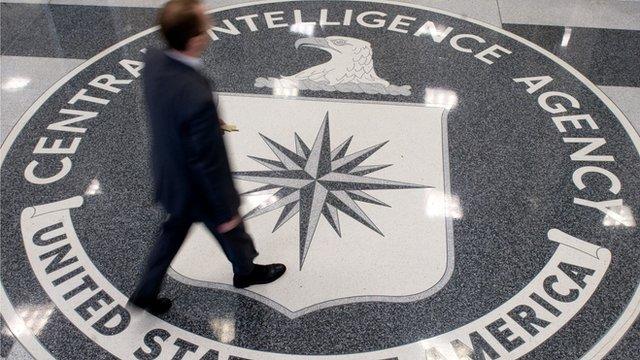
- Published10 December 2014
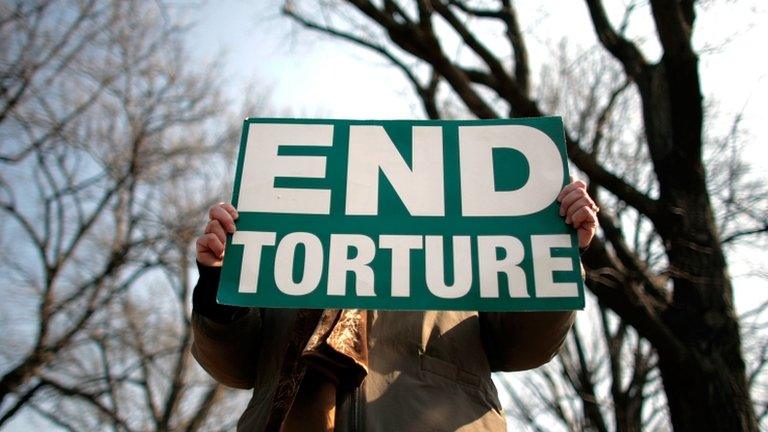
- Published10 December 2014
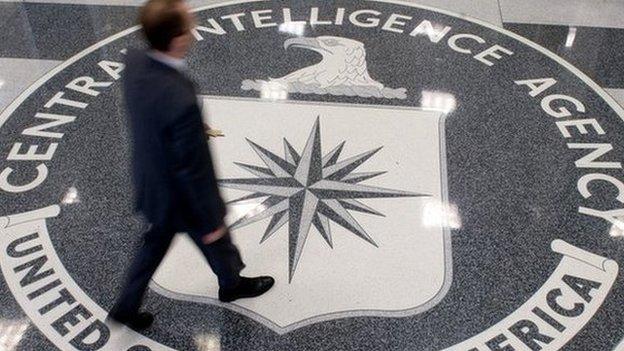
- Published9 December 2014
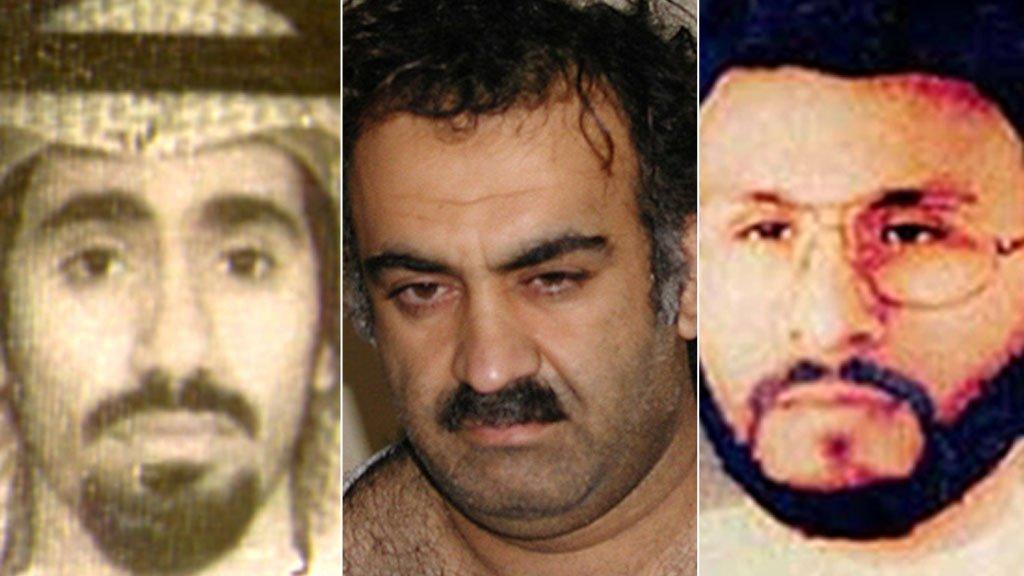
- Published19 November 2014
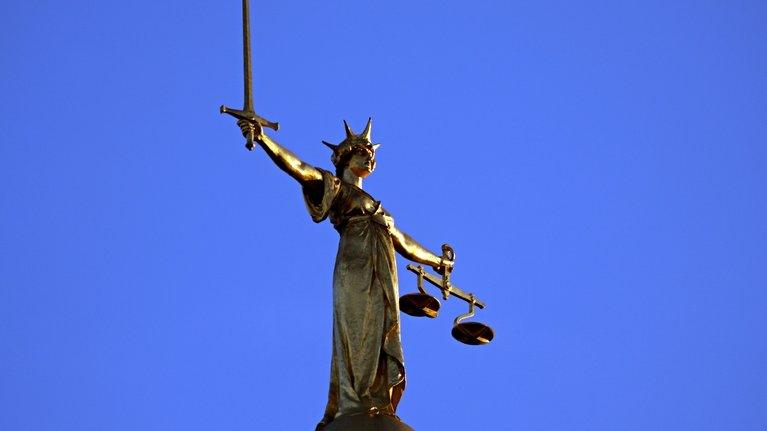
- Published30 October 2014
